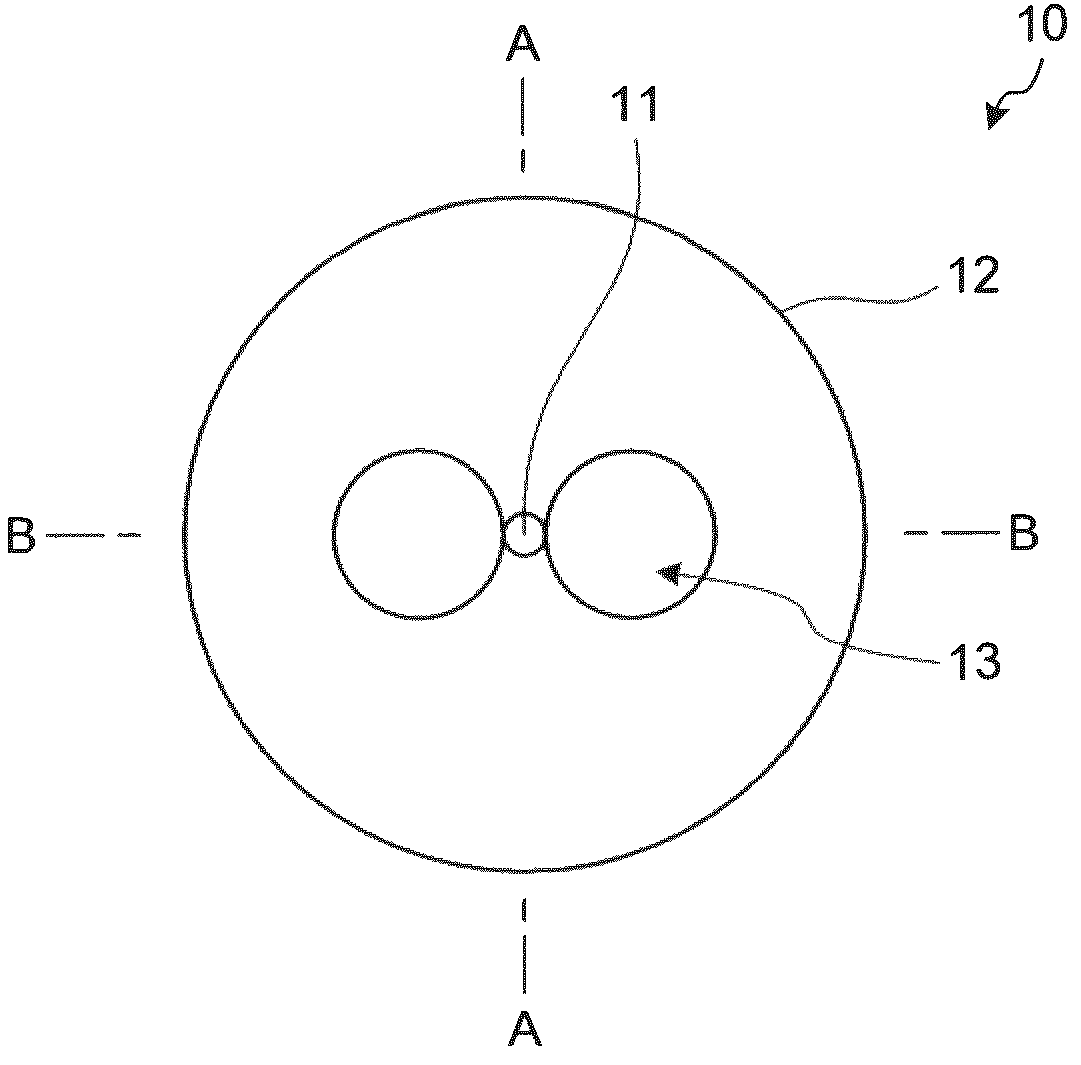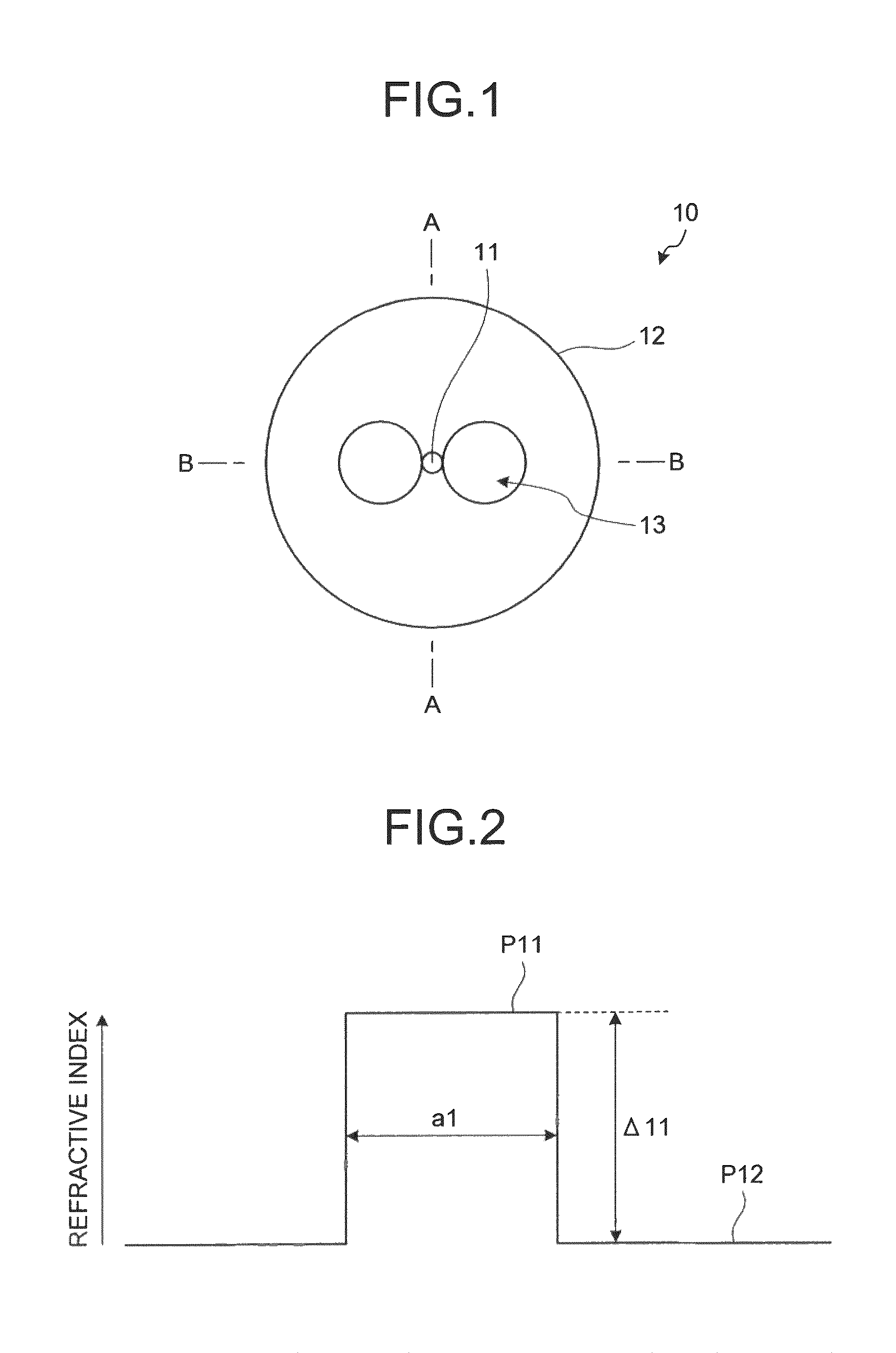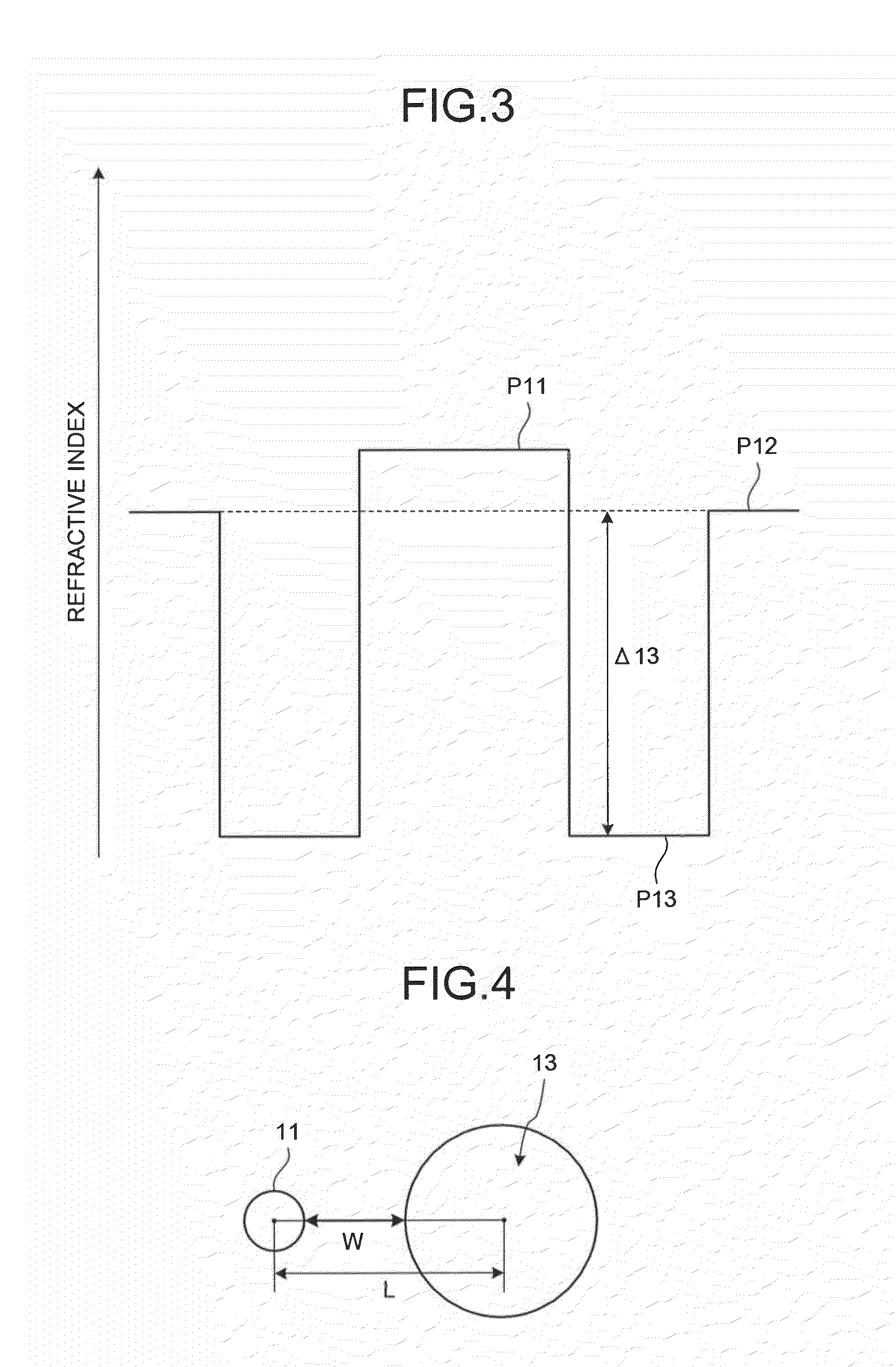Polarization-maintaining optical fiber, method of manufacturing polarization-maintaining optical-fiber connecting portion, and polarization-maintaining optical-fiber connecting portion
a technology of polarization-maintaining optical fiber and polarization-maintaining optical fiber, which is applied in the direction of optical fibers with polarisation, manufacturing tools, instruments, etc., can solve the problems of reducing modal birefringence, reducing polarization maintaining property, and greatly increasing macro-bending loss
- Summary
- Abstract
- Description
- Claims
- Application Information
AI Technical Summary
Benefits of technology
Problems solved by technology
Method used
Image
Examples
first embodiment
[0034]FIG. 1 is a schematic cross section of a polarization-maintaining optical fiber 10 according to the present invention. As shown in FIG. 1, the polarization-maintaining optical fiber 10 includes a core region 11 and a cladding region 12 that is formed on the outer circumference of the core region 11. The refractive index of the cladding region 12 is lower than that of the core region 11. The core region 11 is made of germanium-doped silica glass, and the cladding region 12 is made of pure silica glass into which no dopant for adjusting the refractive index is doped. The cladding region 12 has two holes 13 opposite to each other across the core region 11. Either of the holes 13 is formed in such a manner that the minimum distance from the core region 11 is virtually zero. The minimum distance will be explained in detail later.
[0035]FIG. 2 is a schematic diagram illustrating a refractive index profile of the polarization-maintaining optical fiber 10 shown in FIG. 1 at a cross sec...
second embodiment
[0076]As polarization-maintaining optical fibers according to a fifteenth to a twentieth embodiment examples, a polarization-maintaining optical fiber having the same structure as the polarization-maintaining optical fiber with changes of the relative refractive index differences of the center core region and the outer core region, the diameter of the center core region, the core diameter of the core region and the α value, and the hole diameter of the holes has been fabricated.
[0077]FIG. 13 is a table showing the characteristics of the polarization-maintaining optical fiber according to the fifteenth to the twentieth embodiment examples. In FIG. 13, “Δ21” is the relative refractive index difference of the center core region, “Δ22” is the relative refractive index difference of the outer core region, “α2” is the α value, “a21” is the diameter of the center core region, and “a22” is the core diameter. In this case, the α value is an α value obtained when the profile from a position ...
fourth embodiment
[0085]FIG. 17 is a schematic diagram for explaining the method of manufacturing a polarization-maintaining optical-fiber connecting portion according to the First, as shown in FIG. 17, the polarization-maintaining optical fiber 10 and the stress-applying-type polarization-maintaining optical fiber 40 are fusion spliced using a conventional fusion splicer in a state in which the polarization axes are matched. In this case, because the holes 13 formed in the polarization-maintaining optical-fiber 10 become marks for matching the polarization axes, it is possible to match the polarization axes by performing the core matching using an image processing function of the conventional fusion splicer in such a manner that the arrangement direction of the holes 13 of the polarization-maintaining optical fiber 10 becomes identical to the arrangement direction of the stress applying members 43 of the stress-applying-type polarization-maintaining optical fiber 40. The fusion splicing is performe...
PUM
| Property | Measurement | Unit |
|---|---|---|
| refractive index profile | aaaaa | aaaaa |
| wavelength | aaaaa | aaaaa |
| wavelength | aaaaa | aaaaa |
Abstract
Description
Claims
Application Information
 Login to View More
Login to View More - R&D
- Intellectual Property
- Life Sciences
- Materials
- Tech Scout
- Unparalleled Data Quality
- Higher Quality Content
- 60% Fewer Hallucinations
Browse by: Latest US Patents, China's latest patents, Technical Efficacy Thesaurus, Application Domain, Technology Topic, Popular Technical Reports.
© 2025 PatSnap. All rights reserved.Legal|Privacy policy|Modern Slavery Act Transparency Statement|Sitemap|About US| Contact US: help@patsnap.com



